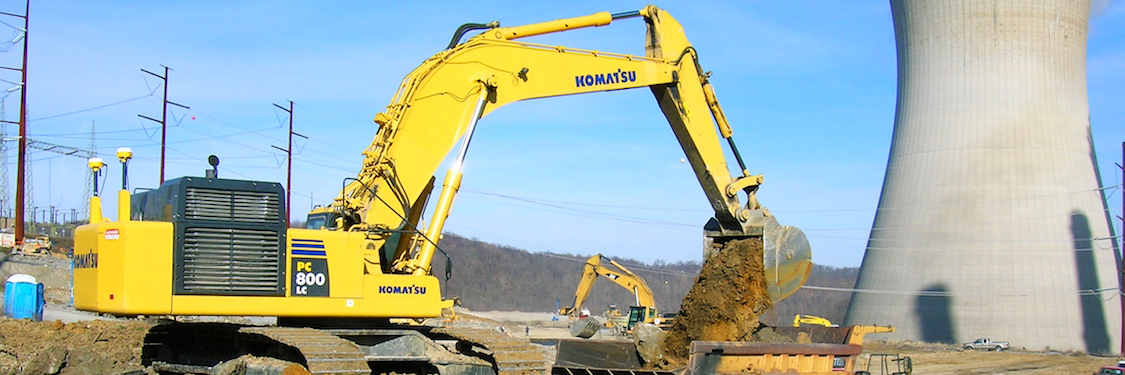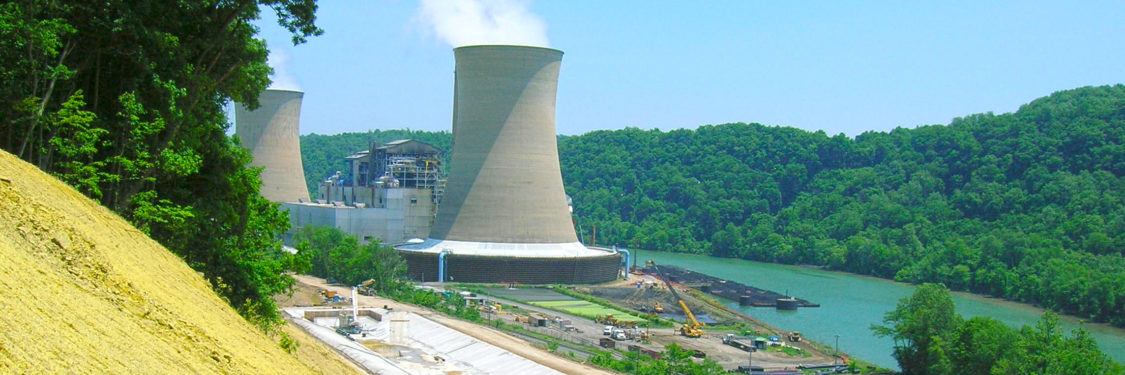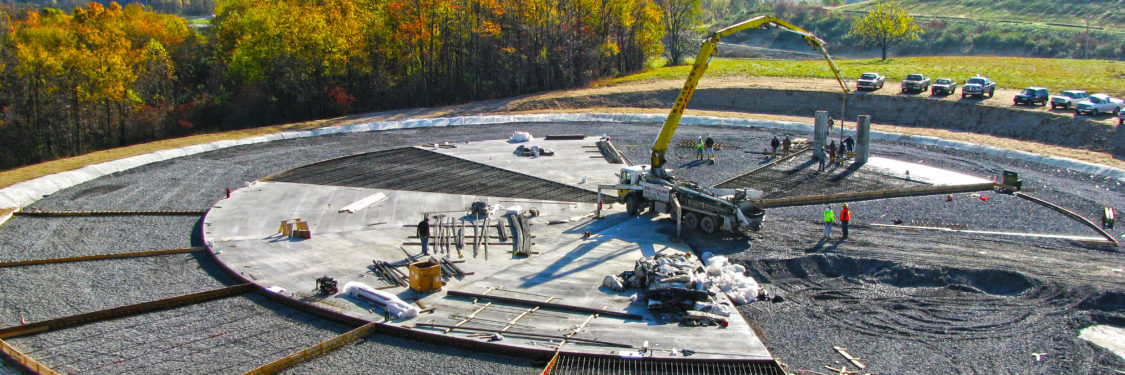AES/AEP Power Plant Expansion
AES/AEP Power Plant Expansion, Maidsville, WV
LOCATION
Maidsville, WV
Project Highlights
- 11,000 ft of 24 and 28 inch high-density polyethylene fusion-weld pipe
- 5,000 cy cast-in-place concrete lagoon floors
- 500,000 cy excavation and blasting, over 450,000 cy of excess hauled two miles to waste area
- 40,000 cy limestone crushed on-site for aggregate fill
- 650,000 cy excavation performed under aggressive schedule conditions
Project Description
Power plant construction requires a contractor who can meet a demanding regulatory schedule, perform high-quality work and maintain a safe environment. Based upon their long-time relationship, AES and AEP can depend upon Beaver to perform landfill upgrades and expansions, construct underground utilities, sedimentation basins, ash lagoons, wetland treatment systems and concrete foundations and structures.
At AES’s Fort Martin Power Station, Beaver constructed two 500 ft long and 110 ft wide ash lagoons to facilitate the plant’s new scrubber system. Construction of the lagoons required nearly 5,000 cy of concrete and an extensive under-drain piping and HDPE liner system, fabric form side slopes and ditches, drainage towers, collection troughs, valve vaults and the sampling building’s footer and floor. Additionally Beaver completed aggregate roadways and laydowns, electric, lighting and seeding at the facility.
Construction of the new scrubber system at AES’s Hatfield’s Ferry Power Station required excavating and blasting more than 500,000 cy of material – mostly limestone. More than 40,000 cy of limestone was crushed onsite to construct two 50-foot reinforced earth slopes, with geo-grid, and a sub-surface drainage layer within the site fills. Over 450,000 cy of excess excavation was hauled two miles to the plant’s ash disposal area.
Work for the newly constructed waste disposal area at AEP’s John E. Amos Power Station included 650,000 cy of excavation. Despite regulatory delays, schedule changes and difficult fill locations, Beaver was able to complete the project by having 20 crew members working double shifts.
Related Projects
Columbus UpGround Water Reservoir-Richwood, Ohio
First Energy Tinkers Creek Stream Restoration-Cuyahoga County, Ohio
ODOT S.R. 8/271 Interchange Reconstruction-Summit County, OH
Republic Services Countywide Disposal-Bolivar, Ohio
Tanger Outlet Center-Pittsburgh, PA
Timken Underpass Bridge Construction-Canton, Ohio
ODOT S.R. 58 Railroad Grade Separation-Wellington, Ohio
ODOT S.R. 7 Slope Excavation-Jefferson County, Ohio
ODOT US Route 33 Bypass Construction, Phase III-Nelsonville, Ohio
Marysville UpGround Water Reservoir-Marysville, Ohio


